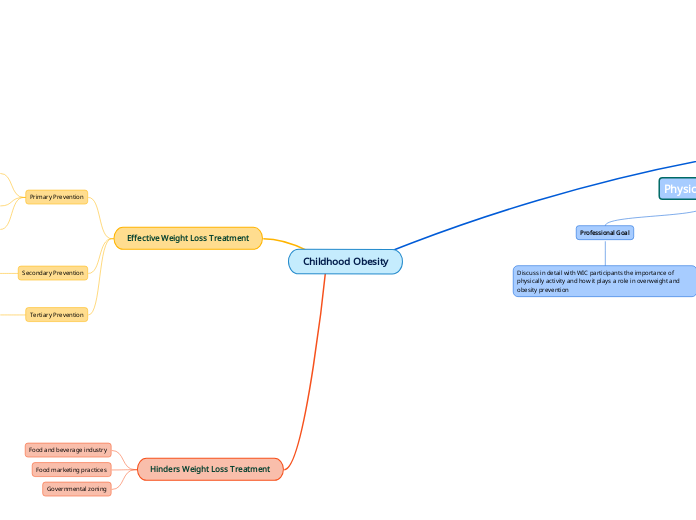av Makenzie L Hayes för 4 årar sedan
177
Childhood Obesity

av Makenzie L Hayes för 4 årar sedan
177

Mer av detta
Reduce Glycemic Load
Low Carb Diets
Primary Care Provider
Increase physical activity and improve eating behaviors
The time children spend at school being physically active have improved the time children spend being active
In a 4yr study that decreased the amount of SSB, Energy dense snacks, and increase fruit and vegetables, there was a significant lower prevalence of overweight and obesity.
Weight loss has been reported in short and long term
Reduction of inflammatory markers & CVD risks
Recommended by the American Diabetes Association
Strong metabolic benefits
Although research shows growing metabolic evidence, IF is NOT recommended for children.
helps with weight management
Helps reduce blood pressure
Discuss in detail with WIC participants the importance of physically activity and how it plays a role in overweight and obesity prevention